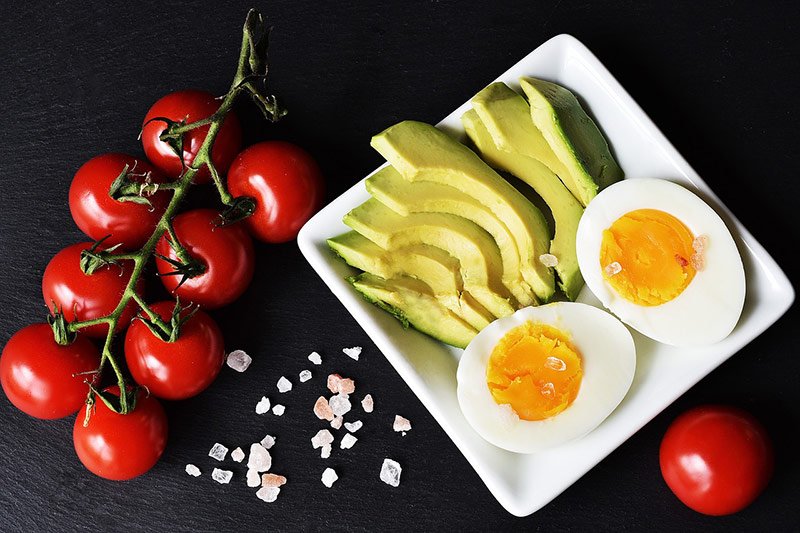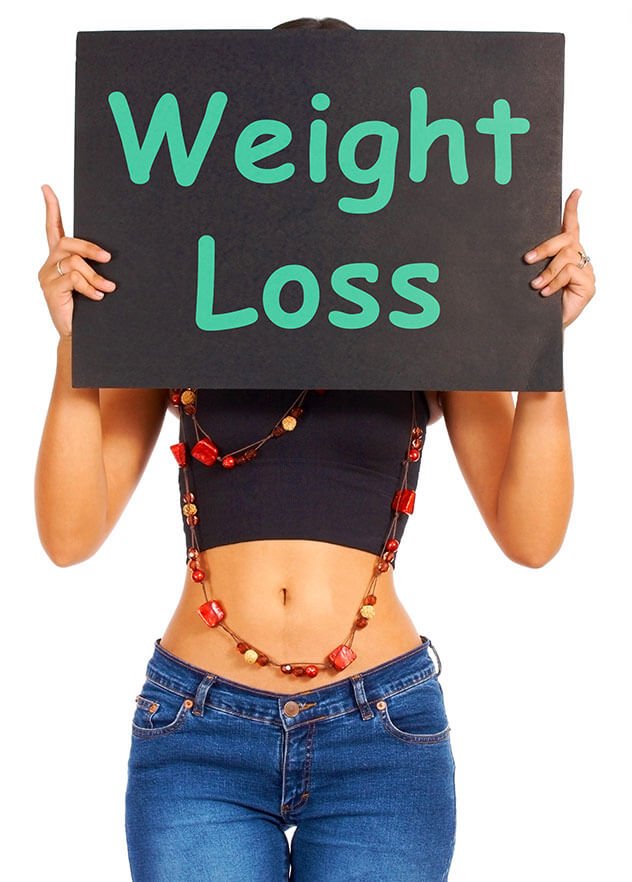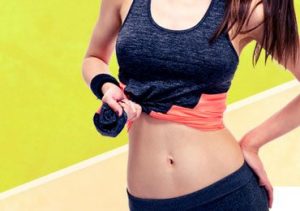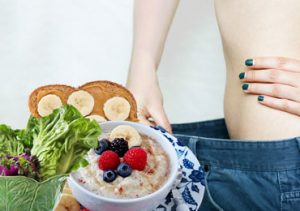Weight Loss and its related diets generally tend to make food drab and tasteless. The Ketogenic Diet is a great way to lose close to 3 Kgs/week while you indulge in fat-friendly, protein-rich food of your choice! The Ketogenic Diet or the Keto Diet comprises of the consumption of fats in large quantities and the consumption of proteins in moderate quantities daily while reducing the consumption of carbohydrates to an amount that is usually lesser than 50 gms/day.
How Does the Ketogenic Diet Work?
The food that we consume gets broken down in our stomach and intestines. The carbohydrate in the food is broken down by the digestive system and is introduced into the bloodstream in the form of blood sugar or glucose. The cells break down this blood sugar or glucose to make energy for our body’s functioning.
In the Ketogenic Diet, the body is given a high-fat diet. The liver breaks down the fat molecules to make ketones and, in the absence of blood sugar/ glucose as fuel, the cells break down these ketone bodies to produce energy. The process of the body to use fat molecules to produce energy is called Ketosis.
Once the process of Ketosis begins, which usually takes 1-2 weeks, the consumption of fat by the body increases and leads to a steady weight loss with the Ketogenic Diet of upto 3 Kgs/week. If you are inclined to include exercise into your daily routine, your weight loss can increase drastically.
Types of Ketogenic Diet
Let’s take a look at types of Ketogenic Diet –
Simple/Standard Ketogenic Diet
This is the general or standard type as stated in the name. It includes consumption of low amount carbohydrates, a medium quantity of proteins and a high quantity of fats. It is the easiest variant of the diet to follow. After the ketosis sets in, this Ketogenic Diet can easily help you lose 2-3 kgs/week approximately.
Tracked/Targeted Ketogenic Diet
This type of Ketogenic Diet, consuming carbohydrates around the period of high-cardio workout is allowed. However, this variant should be usually practiced under the guidance of a nutritionist or gym trainer for one to be able to experience any useful weight loss.
High-Protein Ketogenic Diet
This variant of the diet allows the inclusion of a high-protein intake in the high-fat Ketogenic Diet. This is usually preferred by people who are into athletics or bodybuilding.
Cyclic Ketogenic Diet
This variant of the diet is a way of continuing the Ketogenic Diet while observing short periods of consumption of high carbohydrates. Usually, the pattern of carbohydrate consumption follows in the form of 4-5 days of Keto-Diet with a break of 2-3 days of High Carbohydrate diet. This helps a person to follow the Keto-Diet for a long period of time without feeling any side effects.
What can be eaten?
The Ketogenic Diet is a fat-friendly diet as it involves large consumption of fatty food like –
- Nuts and seeds (chia seed, almonds, cashew nuts, walnuts, etc.)
- Butter and Ghee
- oils (palm, olive, coconut)
- cheese
- milk cream
The diet plan includes the consumption of protein-rich foods like –
- eggs
- cheese (cottage cheese, unprocessed cheese)
- tofu
- red meat (lamb, pork, beef)
- white meat (fish, poultry)
- mushrooms
- pulses
- milk
Other important food items that form a part of the Ketogenic diet –
- green leafy vegetables (spinach, fenugreek leaves, etc.)
- cauliflower
- broccoli
- sprouts
- bell peppers
- onions
- garlic
- cucumber
- squashes
- gourds (apple, bottle, bitter, etc.)
Most fruits are rich in carbohydrate content; thus, the Ketogenic Diet includes only berries like blueberry, strawberry, blackberry, etc. that are rich in minerals as well as anti-oxidant content and very low in carbohydrate content.
What is Keto Flu?
After starting the Ketogenic Diet, the body first consumes the readily available glucose in the blood. Once this glucose depletes, the body starts Ketosis. However, this transition tends to have certain uncomfortable but non-threatening symptoms like:
- Irritable stomach
- Mood swings
- Constipation
- Increased thirst
- Bad breath or Keto-breath
- Tiredness
- Low energy
The display of all or a combination of the above symptoms is called ‘Keto Flu‘. The symptoms disappear once the body gets used to the new fuel comprising of ketone bodies that the liver produces by burning the fat content in the diet plan.
Benefits of Ketogenic Diet
Well, now that we know what Keto diet is all about, lets take a quick look at what are the benefits of this diet style. The first major benefit is that it ensures weight loss while keeping you well fed. No need to starve or avoid outing while following the Ketogenic Diet.
- This diet is easy to follow; you can eat all you want except carbohydrates.
- It can be followed even when you go out to eat. When eating out in a restaurant simply order a protein-rich dish, like meat or fish, with a side dish of salad.
- The diet includes high fiber content obtained by vegetables. Thus, it gets you a good dose of vitamins and minerals from natural plant sources.
- It reduces blood sugar and is a good food pattern for people with type 2 diabetes.
- The main theme of the diet is to eat well and keep your stomach full. Thus, it is good for people suffering from acidity. This diet is proven to have a calming effect on the stomach.
- Increased physical endurance is one of the benefits of Ketogenic Diet.
- Increased energy levels after the initial first few days of Keto Flu.
How to make your meals into Ketogenic Diet Meals?
Any diet becomes easy to follow once you select, pre-plan, and organize your meals. Here are a set of sample meals to make it easy for you to attain Weight Loss with Ketogenic Diet.
1: Type – Breakfast
Eggs are an easy choice for anyone to make for the breakfast meal. They are filling, nutritious, and easy to make. To make this ‘first meal of the day’ more Keto-friendly choose any combination of the following with the eggs :
- Make the eggs in olive/palm oil
- Add onions, mushrooms, to increase protein content
- Add cheese to increase taste, protein and fat content
- Include bacon
- Have a side dish of stir-fried vegetables
2: Type – Lunch/Dinner
The major meals can be made rich in fat and protein content by choosing any red/white meat as the main component of the dish. For vegetarians, it is recommended to include paneer (cottage cheese) or tofu as the star of the dish. Increase the meal’s Ketogenic Diet correctness by any of the following options:
- Cooking in olive/palm/coconut oils
- Eat large quantities of the meat portion of the dish
- Include green leafy vegetables in a side dish
- Make a nutritious salad of vegetables with a rich-in-taste olive oil dressing
3: Type – Snack
The Ketogenic Diet encourages snacking, provided you do your snacking the correct way. The high carbohydrate content of biscuits, pasta, noodles, crackers, etc. is not encouraged for snacking to lose weight with the Keto-Diet. The following combinations can be a way to indulge your taste buds as well as follow the diet:
- Eating vegetable salads
- Consuming berries
- Having soups, with vegetables and/or chicken
- Snacking on nuts like almonds or cashew nuts
- Snacking on seeds like chia seeds, pumpkin seeds, or flax seeds
- Eating sprouts
Frequently Asked Questions about Ketogenic Diet
1. Is the Keto Diet Safe?
Answer : Yes, weight loss with Ketogenic Diet is a very safe and healthy way of weight loss. Start your Ketogenic Diet anytime to lose weight easily as well as fast.
2. Can I have tea or coffee while following the Ketogenic Diet?
Answer : Yes, it is a good idea to have caffeine or tea as they do not have any carbohydrate. Caffeine is very helpful in increasing weight loss as it tends to boost the metabolic rate of the body; therefore, it tends to increase the benefits of the Ketogenic Diet. However, you must be careful not to add sugar or sweeteners to the drink as they increase the carbohydrate content.
3. How long before the weight loss begins?
Answer : Initially the body tries to burn any existing blood sugar present from the carbohydrates. After 1st weeks, the body starts the Ketosis process and starts to burn fat. So, even though you may feel some loss of weight due to the change of dietary pattern in the early part of the diet, the real benefits of Ketogenic Diet start in the 2nd weeks.
4. Is having an irritable stomach or indigestion normal?
Answer : Yes, it is common to feel indigestion or irritability in the stomach during the first week when the body is still trying to adjust to the change in the diet pattern. The solution to this is to drink plenty of water as well as keep your stomach full by eating plenty of Ketogenic Diet recommended food, i.e. food rich in fat and protein. Also, eat good quantities of vegetables to provide the required fiber and mineral content in the diet.
5. Is it normal to have bad breath?
Answer : Yes, bath breath is a side effect of the diet. While the body settles into regular Ketosis you may experience bad breath. This is also called as Keto-Breath and can smell similar to the acetone. It is recommended that you consume a lot of water and chew chewing gum/mint to ensure freshness of breath.
6. Who should follow this diet plan?
Answer : Ketogenic Diet helps to lose weight easily, it is especially recommended for –
- people with diabetes (type 2)
- people with acidity problems
- people who suffer from gas
- people who suffer from low metabolic systems
- people who are unable to follow diets involving starvation or very low food intake
- there is also proof of the medical benefits of Ketogenic Diet for epilepsy patients
7. What supplements are required while following this Weight Loss Diet?
Answer : Since the diet restricts consumption of fruits and carbohydrate-rich cereals, it is recommended to take calcium, mineral, and vitamin supplements. However, this is only recommended under medical supervision or/and if the diet is followed over a long period of time.
8. Who should not do Ketogenic Diet?
Answer : The Ketogenic diet plan may be risky for people who take insulin, people who take blood pressure medicines and for women who are breast-feeding their children.
9. What not to eat Ketogenic Diet?
Answer : The consumption of all carbohydrate-rich foods is restricted in a Ketogenic Diet. The following include the types of food not to consumed during the diet:
- Cereals (rice, wheat, oats, millets)
- Baked products (cake, biscuits, bread)
- Flour products (roti, flat-breads, pasta, lasagna, etc.)
- Fruits (except berries)
- Low-fat milk
- Processed cheese products
Hope you found this article useful and informative. If yes, then please share your thoughts in the comments section below. Also please share this article on social media with your friends and family.



















